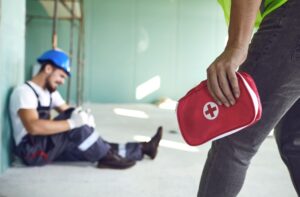Health and Safety Executive (HSE) describes work-related violence as an instance of physical, verbal, or psychological violence towards an employee because of their job. The Prevention and Management of Violence and Aggression (PMVA) service helps reduce the risk of violence and aggression at work by giving training and advice. People who work in social and health care can also get focused help from the service.
Training for PMVAs and MVAs is based on a person-centred approach to conflict and difficult behaviour, using a six-stage model of responsive and proactive service delivery, with restraint and physical intervention as the ultimate option, in accordance with the current guidelines of NICE (Violence and Aggression, that is Short-Term Management in Health, Mental Health, and Community Settings). The training meets the standards for resolving conflicts and using laws set by NHS Protect.
What is the purpose of PMVA?
Anyone can be affected by violence at work or the fear of it. Many places of work have employees who have been in a violent or aggressive situations. Because of this, some places will have been short-staffed. The Prevention and Management of Violence and Aggression Service give the training to help stop acts of violence and aggression and deal with the risks they pose.
The Prevention and Management of Violence and Aggression is meant to encourage violence prevention as the first choice and to teach employees and users how to handle aggressive situations safely, including high-risk situations where physical interventions like breakaway or control and restraint may be needed.
What are the essential characteristics of the training?
- How to communicate with others:Your teams will demonstrate and practice the proper use of language to prevent and resolve conflict.
- Understanding of Behavior:Your team will learn to recognize behaviour cues and the ways that situations can cause stress, anger, or other negative emotions.
- Collaboration during incidents:Your team will have to work together to solve problems and learn how to think and talk as a team along the way.
- Self-Defense:Your team will have to learn how to keep themselves safe and use strong, appropriate self-defence techniques in many different situations.
- Legal Guidelines for Restrictive Conduct:Your team will think about how their actions fit with the law, which will help them make better reports.
- Principles of Restraint Reduction: In each scenario, they work through, your team will have to show how they follow restraint reduction principles.
- Risk Awareness:Every restraint has a risk, so your team needs to learn how to choose between them and reduce the risk of serious injury or death from bad outcomes.
- Holding Skills:Your team will learn a wide range of skills that will help them hold, control, or restrain people safely, depending on the level of risk and how vulnerable the person is.
Final Thoughts:
Doctors’ review:
One of the preferred home office medical specialists has looked over this training from a medical and legal point of view. He looks at programs for controlling people, so you’re in good hands. Now, if you want to work with children and young people, the new guidance says that the training you give and the techniques you use must be appropriate for children and young people and be backed up by a medical review.
CR Training Solutions offer PMVA and MVA training to valued customers in order to eliminate the risk of conflict and aggression in the workplace.




